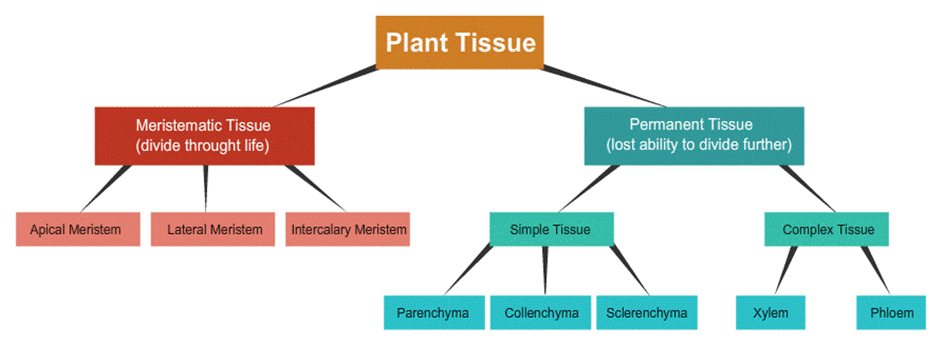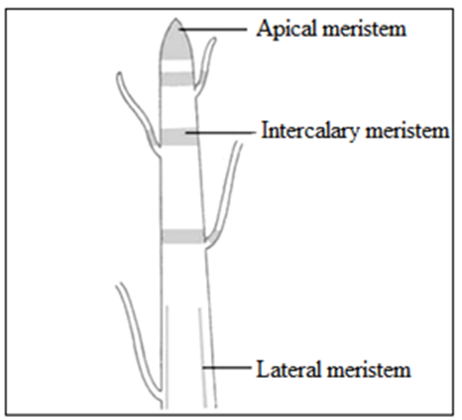Tissues
Introduction
• Living organisms in this world comprise of cells.
• There are unicellular as well as multicellular organisms present in this world.
• In unicellular organisms, the only single cell is capable of performing several functions such as Respiration, Digestion and Clearing of the cell.
• In multicellular organisms, there is a division of labour. There are different types as well as groups of cells that perform different functions in a multicellular organism.
• Cells form groups cells that need to perform a single task often group together.
• This grouping of cells together to perform a function efficiently is called a Tissue. For Example, Muscles and Blood.
• The tissue cells have the same structure and they perform the same function.
Plant Tissues

Types of Plant Tissues
Meristematic Tissue
• Only certain parts of a plant tend to grow. The tissues located in such parts are called meristematic tissues.
• They have the capability to divide themselves and form new tissues. They have thin cell wall made of cellulose. Also have dense nucleus and cytoplasm but lack vacuoles.
• They can further we classify differently based on the areas of the plants where they are located -
o Apical
o Lateral
o Intercalary

Location of meristematic tissue
|
Apical Meristem |
Lateral Meristem |
Intercalary Meristem |
|
|
|
Why there are no vacuoles in the intercalary meristem?
- Vacuoles are responsible for storage of food in water. The intercalary tissues do not store them. They are rather responsible for manufacturing them.
- Moreover, vacuoles contain sap which provides rigidity to a cell. This property of vacuoles may not allow the intercalary tissues to divide and manufacture new cells. Hence vacuoles are not present in them.

 ACERISE INDIA
ACERISE INDIA
 Vaishnav Publication
Vaishnav Publication
